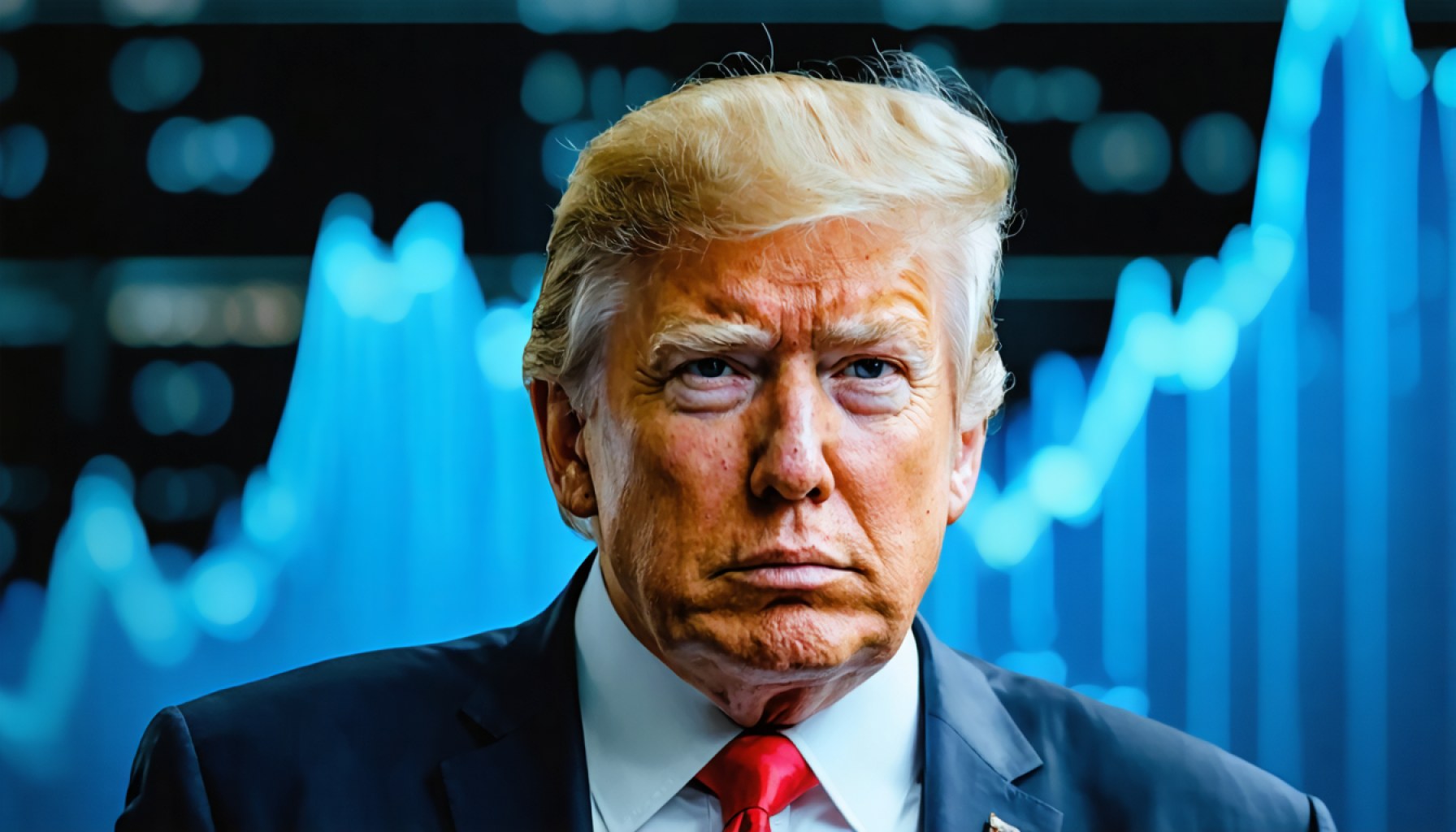- The financial market experiences increased volatility as President Trump prepares to implement reciprocal tariffs against all countries.
- Nasdaq 100 futures plunged 1.1%, while S&P 500 and Dow Jones Industrial Average futures fell 0.8% and 0.5%, respectively.
- Investors express concern over the economic impact of aggressive trade policies, exacerbating existing market instability.
- Gold prices surged past $3100, indicating a flight to safer assets amidst geopolitical uncertainty.
- The imminent March jobs report is crucial, as analysts seek to gauge the resilience of America’s labor market.
- Trump’s global economic strategy could escalate further, prompting increased financial stakes globally.
- Investors must be prepared for a volatile market environment with potential aftershocks from the high-stakes trade strategy.
As dawn broke over Wall Street on a brisk Monday morning, stock futures painted a grim picture of unease and instability. A sweeping apprehension grips the financial market, with investors jittery about President Trump’s impending tariff roll-out, whimsically dubbed “Liberation Day.” This bold initiative promises reciprocal tariffs targeting “all countries,” thrusting uncertainty into an already tumultuous economic landscape.
Nasdaq 100 futures took a steep dive, plunging 1.1%, leading the day’s market slump, while S&P 500 futures also tumbled, shedding roughly 0.8% of its value. Meanwhile, Dow Jones Industrial Average futures dropped approximately 0.5%, or around 200 points, a harbinger of volatility amidst trade turmoil.
The turbulence within the financial sector is further accentuated by fears of adverse economic impact due to Trump’s aggressive trade policies. For investors, the crescendo of trade tensions arrives on the heels of a rocky March, marked by a procession of weekly declines that saw the S&P 500 and Nasdaq Composite struggle to find stable ground.
Panic isn’t merely isolated to equities; it has rippled through the commodities market too. Gold prices surged past $3100, as investors flock to more secure assets amidst geopolitical uncertainty, propelling the precious metal to uncharted heights for the third consecutive day.
The stage is set for potential fireworks with the much-anticipated March jobs report slated for release. As key data on private payrolls and job openings loom, analysts keenly await signs of whether America’s labor market remains resilient or buckles under the pressure of trade conflicts and inflation worries.
Trump’s economic offensive is poised to stretch beyond American borders, heightening the financial stakes on a global scale. Reports indicate the President urges advisors to escalate measures even further, hinting at a rugged and robust approach that leaves no stone unturned.
In these unpredictable times, the overarching narrative remains clear: investors must navigate a landscape fraught with volatility and risk, armed only with keen insight and an aptitude for swift financial acrobatics. The coming days promise a wild ride as global markets brace for potential aftershocks of this high-stakes trade strategy.
Wall Street Worries: How Tariff Tensions are Transforming Global Markets
The financial markets are under significant strain with the advent of President Trump’s “Liberation Day,” a tariff initiative that threatens to intensify trade tensions with countries worldwide. This economic policy heralds uncertainty, disrupting stock markets and sending investors scrambling for stability.
How Trade Policies Impact Market Indices
– Nasdaq 100 has seen a significant decline, falling by 1.1%. Technology companies, heavily reliant on international supply chains, face potential disruptions.
– S&P 500 futures dropped by 0.8%, signaling broader market unease as industries brace for impact across sectors.
– Dow Jones Industrial Average experienced a 0.5% decline, approximately 200 points, attributed to fears of heightened tariffs and trade tensions.
Ripple Effect in Commodities
Amidst growing geopolitical concerns, commodity prices are mirroring the volatility in equities:
– Gold prices have soared beyond $3100, reflecting a flight to safety among investors. Historically, gold has acted as a hedge against economic downturns and currency volatility.
Anticipating the March Jobs Report
The upcoming March jobs report is crucial in determining the resilience of the U.S. labor market. Analysts are focused on:
– Private Payrolls and Job Openings: Critical indicators that may reveal the impact of trade policies on employment and economic growth.
Global Market Implications
Trump’s aggressive trade policies are likely to have far-reaching effects:
– International Relations: Heightened tariffs may strain diplomatic ties, potentially prompting retaliatory measures from trade partners.
– Economic Ripple Effects: Global supply chains and trade balances could face disruptions, impacting everything from manufacturing to consumer prices.
Real-World Use Cases
For investors navigating these turbulent waters, careful strategy and diversification are essential:
– Hedging with Precious Metals: Adding gold or silver to investment portfolios may provide a protective hedge against market volatility.
– Exploring Emerging Markets: Diversifying investments into emerging economies could bypass some negative effects of U.S.-centric trade policies.
Insights & Predictions
Looking ahead:
– Economists predict potential market stabilization, contingent upon clear policy clarifications. The current market response to tariffs may level out if diplomatic breakthroughs or trade negotiations occur.
– Financial advisors are recommending cautious optimism, suggesting that investors remain informed and ready to adapt to the evolving economic landscape.
Quick Tips for Investors
1. Stay Informed: Regularly check market forecasts and emerging news on trade policies.
2. Diversify Holdings: Avoid over-reliance on single sectors heavily impacted by tariffs.
3. Consult with Experts: Financial advisors can provide personalized strategies tailored to withstand market fluctuations.
For more insights into economic trends and investment strategies, visit Wall Street Journal.
By considering these dynamics, investors can better position themselves to weather the unpredictable nature of current financial markets, maintaining stability amid change.
